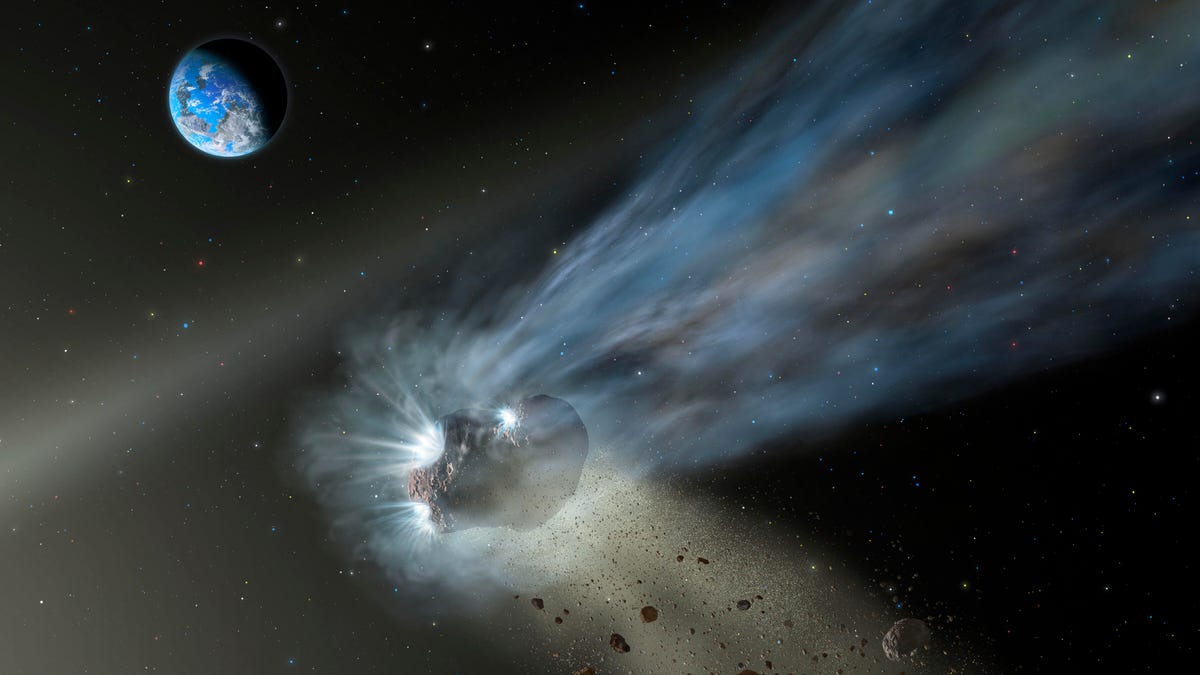Bright comet caught recklessly racing toward the sun
A sungrazer comet announced itself shortly before being vaporized.

Artist's depiction of a comet flying through the inner solar system.
An unnamed comet embarked on a bold but ultimately self-destructive mission as it was seen careening on a collision course with the sun.
Images from the US Naval Research Laboratory (NRL) and NASA's Solar and Heliospheric Observatory captured the so-called sungrazer comet practicing its namesake close approach to our star.
Comet approaching the Sun (from southwest, or lower right), while slow CMEs were in progress on both the east and west limbs. The comet must have overlapped with the solar disk by now if it had survived. pic.twitter.com/DH1ftnycr7
— Halo CME (@halocme) August 27, 2020
Calculations of the comet's trajectory estimated it would pass behind the sun at a distance of less than two solar radii (865,000 miles or 1.4 million kilometers).
"This is not survivable for a little comet," Karl Battams of the NRL and NASA's Sungrazing Comets Project tweeted.
Our bright SOHO sungrazer is still looking as healthy as can be hoped! [📷: https://t.co/0lbmyfPeHV]
— Karl Battams (@SungrazerComets) August 26, 2020
Perihelion looks like it'll be 2020-08-27 ~15:58UT, at about 0.0067au (~~1.5 solar radii). This is not survivable for a little comet. ☀️☄️ pic.twitter.com/4ftuTFdOtn
The space snowball's close pass happened Thursday morning, and all indications are it did not survive. Battams pointed out how quickly the comet was coming apart as it raced toward our neighborhood star.
"(The comet's) tail is not your typical comet tail -- it's more of a boulder-strewn debris trail," Battams wrote. "The comet is being entirely deconstructed by solar radiation in our solar system's most hostile environment!"
The bright @esa/@NASASun SOHO comet has now entered our @USNRL LASCO C2 camera.
— Karl Battams (@SungrazerComets) August 27, 2020
That tail is not your typical comet tail - it's more of a boulder-strewn debris trail. The comet is being entirely deconstructed by solar radiation in our solar system's most hostile environment! ☀️ pic.twitter.com/OYeXvQBoiK
Sungrazer comets are not uncommon, but this one was particularly bright and easy to spot. Although we had little time to get to know it, it seems to have gone out in a blaze of glory.

